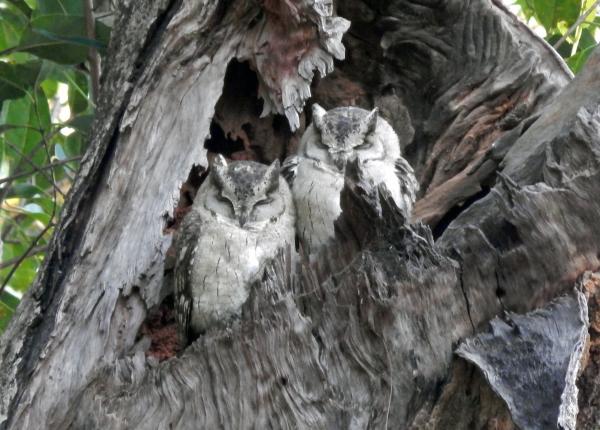Did You Know?
- There is at least one old report of this species being seen in Oman, but it has not been verified.
- There are four recognized subspecies of the Indian Scops-owl
- Its call has been described as "frog-like"
How The Peregrine Fund is Helping
The Peregrine Fund does not work directly with this species, but our efforts in scientific research, habitat conservation, education, and community development help conserve raptors around the world. We also supply literature to researchers from our avian research library, which helps scientists around the world gather and share important information on raptor conservation. We also run the Global Raptor Impact Network which gives raptor researchers tools to more efficiently conduct their own studies while contributing to a global program. GRIN also provides citizen scientists a way to participate in raptor science and conservation.
Where They Live
Despite its name, the Indian Scops-owl isn't only found in India, though it is found mainly on what is known as the Indian Subcontinent. It is found in India, Nepal, Pakistan, Sri Lanka, and Iran.
Throughout its range, this beautiful, little owl makes its home in forests, woodlands, and riverine forests. It is also found in some human-created environments such as cultivated areas, plantations, orchards with trees, and even gardens with trees.
What They Do
The Indian Scops-owl is a nocturnal bird of prey, meaning it is most active at night. During the day, it sleeps, or roosts, in holes in trees or it picks a branch to perch on that is well-covered in dense foliage.
It comes in two color morphs - grey-brown and rufous. Both color morphs have small ear tufts (which aren't really ears at all but feathers that stick up on the sides of their heads), and darker feathers around their facial discs. The facial disc is composed of many feathers around their heads and helps direct sound to their ears. To get an idea of how it works, cup your hands behind your ears and listen – sounds will be louder and clearer. Owls can raise these feathers slightly when on the hunt, allowing them to hear the rustle of a mouse in the grass, the flapping of feathers in the night, or the slithering of a snake on a tree branch. These sounds give away the location of prey animals, making it easy for these owls to deftly swoop in to catch a meal.
Why They Need our Help
This lovely owl is pretty common throughout its range and researchers believe that its population is stable - meaning population numbers aren't going up or down. It is classified as a species of Least Concern.
What They Eat
As you might have guessed, this small owl will usually take small prey as well. It feeds on beetles, grasshoppers larvae, as well as small rodents, small birds and geckos. Some researchers believe that these owls also occasionally feed on bats.
Nests, Eggs, and Young
Like many owls, the Indian Scops-owl doesn't build its own. Instead, it lays its eggs in holes or hollows of trees. Once in a while, it will nest in abandoned buildings. The female will usually lay 2-3 eggs and they must be incubated between around 25–27 days. Apart from these few facts, scientists don't know much more about Indian Scops-owl nests, eggs or young.
Indian Scops-owl and the World Center for Birds of Prey
Though the Indian Scops-owl doesn't live anywhere near Boise, Idaho, you can still learn a lot about owls with a visit to our Velma Morrison Interpretive Center at The Peregrine Fund headquarters. The visitor center at our World Center for Birds of Prey includes owls among its avian ambassadors, including a Verreaux's Eagle-owl and a Western Screech-owl. This is a great chance to see owls up close and learn about the wonderful and interesting adaptations they have in order to survive in their respective habitats. There is also a touch table with owl feathers and other natural objects available for exploration.
References:
BirdLife International. 2016. Otus bakkamoena. The IUCN Red List of Threatened Species 2016: e.T61855263A95182096. https://dx.doi.org/10.2305/IUCN.UK.2016-3.RLTS.T61855263A95182096.en. Downloaded on 25 August 2021.
Holt, D. W., R. Berkley, C. Deppe, P. L. Enríquez, J. L. Petersen, J. L. Rangel Salazar, K. P. Segars, K. L. Wood, and J. S. Marks (2020). Indian Scops-Owl (Otus bakkamoena), version 1.0. In Birds of the World (J. del Hoyo, A. Elliott, J. Sargatal, D. A. Christie, and E. de Juana, Editors). Cornell Lab of Ornithology, Ithaca, NY, USA. https://doi.org/10.2173/bow.insowl1.01









